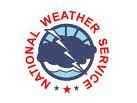Damage caused from a severe hail and wind storm can easily go unseen by homeowners. Although hail damage can oftentimes be overlooked, it is critical, primarily for the longevity of your home’s exterior structure, that the potential damages are carefully inspected and repaired in a timely manner. In most cases, hail falling from the sky will make contact with your home with the help of strong wind currents, which greatly increases the damage to the exterior components of your home.
Cause and Effect of Hail:
Hail forms when frozen water drops are lifted within turbulent winds during thunderstorms. The frozen drops of water increase in size overtime and eventually fall out of the sky as hail. Combined with gravity and different wind conditions, hail can potentially cause severe damage to anything it comes in contact with. The size of a hailstone varies, from a modest size of 1/4″ of an inch {typically the size of a pea} to 3″ inches {the size of a baseball}.
Wind direction and force plays an important role in the outcome of damage on a roof, as well as a roof’s pitch {angle of the roof}.
Figure 1A
Figure 1A illustrates the dynamics of hail impact on two different roof pitches.
The home on the left would sustain more damage to the roof than the one on the right, since the hailstones are making more direct contact with the surface area of the roof. The house on the right would sustain less damage from the hailstones, due to the greater vertical plane of the roof.
Figure 1B
Wind conditions can distort damage to a home as illustrated in Figure 1B.
The house on the left has more glancing blows to the roof from the wind currents, while the windward wall comes under attack from direct hail impact as well. However, the right wall is protected and undamaged from the hailstones. The house on the right will most likely sustain roof damage on the windward side because of the more direct impact, despite the steep pitch.
Figure 2A
Examining the thin aluminum fixtures help verify the impact of hail. Figure 2A.














0 comments:
Post a Comment